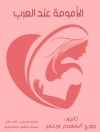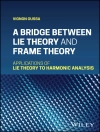This contributed volume contains a collection of articles on state-of-the-art developments on the construction of theoretical integral techniques and their application to specific problems in science and engineering. Chapters in this book are based on talks given at the Symposium on the Theory and Applications of Integral Methods in Science and Engineering, held virtually in July 2021, and are written by internationally recognized researchers. This collection will be of interest to researchers in applied mathematics, physics, and mechanical and electrical engineering, as well as graduate students in these disciplines and other professionals for whom integration is an essential tool.
Tabella dei contenuti
Approximate Solution for One-Dimensional Compressible Two-Phase Immiscible Flow in Porous Media for Variable Boundary Conditions (P. Pires).- On Pseudo-Cross Sections for Neutron Escape from a Domain by a Physical Monte Carlo Simulation (D.G. Benvenutti).- From a Unitary Symmetry Hypothesis to Dynamical Structures in Quantum Mechanics Models (B.E.J. Bodmann).- The Traction Boundary Value Problem for Thin Elastic Structures (C. Constanda).- Mapping Properties of Potential Operators Related to the 2D Compressible Stokes System in Weighted Sobolev Spaces (C. Fresneda-Portillo).- Stochastic effects of the meander on the dispersion of pollutants in the planetary boundary layer under low wind conditions (D. Buske).- Asymptotics for the spectrum of a Floquet-parametric family of homogenization problems associated with a Dirichlet waveguide (Pérez-Martínez).- The Wavelet-Based Integral Formula for the Solutions of the Wave Equation in an inhomogeneous Medium: Convergence of Integrals(Perel).- Modelling The Spread of a Disease in an Epidemic Through a Country Divided into Geographcal Regions (P.J. Harris).- Computing Elastic Interior Transmission Eigenvalues (A. Kleefeld).- A Novel Solution of the Multi-Group Neutron Diffusion Equation by the Hankel Transform Formalism (J.C.L. Fernandes).- A Simple Numerical Scheme to Obtain Reflectivity and Transmissivity of an Isotropically Scattering Slab (C.A. Ladeia).- A Unified Integral Equation Formulation for Linear and Geometrically Nonlinear Analysis of Thick Plates: Derivation of Equations (R.J. Marczak).- On viscous fluid flow in curvilinear coordinate systems (Meneghetti).- Impact Loading of Interface Cracks: Effects of Cracks Closure and Friction (Menshykova).- Periodic Solutions in Rn for Stationary Anisotropic Stokes and Navier-Stokes Systems (S.E. Mikhailov).- Null-solutions of elliptic partial differential equations with power growth (D. Mitrea).- On the Use of the Adjoint Technique to the Estimation of Neutron Source Distributions in the Context of Subcritical Nuclear Reactors (R.C. Barros).- The Nodal LTSN Solution and a New Approach to Determine the Outgoing Angular Flux at the Boundary in a Retangular Domain (A.R. Parigi).- A numerical study of the convergence of two hybrid convolution quadrature schemes for broadband wave problems (D.J. Chappell).- Analytical Reconstruction of the Nonlinear Transfer Function for a Wiener-Hammerstein Model (J. Schmith).- Variation of Zero-Net Liquid Holdup in Gas-Liquid Cylindrical Cyclone (GLCC c) (O. Shoham).- On the Mono-Energetic Neutron Space Kinetics Equation in Cartesian Geometry: An Analytic Solution by a Spectral Method (F. Tumelero).
Circa l’autore
Christian Constanda is the holder of the Charles W. Oliphant Endowed Chair of Mathematics and the Director of the Center for Boundary Integral Methods at the University of Tulsa, an Emeritus Professor at the University of Strathclyde in Glasgow, UK, and the Chairman of the International Consortium on Integral Methods in Science and Engineering. He has authored and edited 34 books and published over 150 articles in scientific journals and conference proceedings.
Paul J. Harris is Reader in Applied Mathematics at the University of Brighton. He has worked on using numerical methods to solve problems in applied mathematics for over 30 years. The problems he has worked on include computational acoustics and explosion bubble dynamics. More recently Dr Harris has concentrated using mathematics to solve biomedical problems including modelling the formation of cavities in the spinal cord and how cells move in response to chemical signal.
Bardo E.J. Bodmann is a Professor at the Engineering School of the Federal University of Rio Grande do Sul, Porto Alegre, RS, Brazil and an active memeber of the Integral Methods in Science and Engineering Consortium. Along his career he (co-)authored over a hundred articles in international scientific journals, several tenth book chapters and a few books. His current research interests focus on mathematical methods to solve classical as well as quantum transport problems. In the context of the latest developments works contemplate also physical Monte Carlo simulatations using parametrisations for multi-dimensional probability density functions and spectral distributions.












